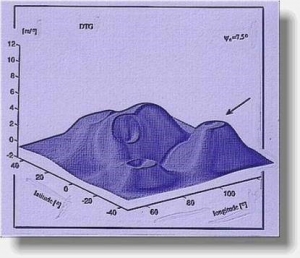Inversion Methodology
Research devoted to development of and innovations in methods for solving the gravimetric inverse problem. A so called „Harmonic Inversion Method" has been developed at our department. We were involved in developing the so called „Truncation Filtering Methodology" based on a sequence of systematically varying the truncation parameter in the Stokes convolution integral for the computation of the geoid from gravity anomalies. We participate in enhancing the applicability of a novice and very verstaile inversion methodology, consisting of several steps: removal of a regional trend defined as a 2D harmonic function, vertical separation of signal of sources by triple harmonic continuation procedure, approximation of multiple sources by line segments, non-linear inversion based on local corrections producing contrast contact structural surfaces (interfaces) and/or homogenous 3D star-convex anomalous sources.
Truncation Filtering Methodology
Written by Peter Vajda | Published in: Inversion Methodology |The Truncation Filtering Methodology (TFM) belongs to the gravity data interpretation methods based on data enhancement and pattern recognition. The TFM is still under development. It is based on filtering the gravity data by means of integral transforms - convolution integrals - with various kernels and one free parameter. This leads to not one image but to an animated sequence of images displaying dynamic patterns. The patterns and their onsets are expected to serve for determining various geological formations and features and for estimating the depth of some of their elements. Such a knowledge and method of interpretation are to be achieved by means of synthetic modeling and case studies.

